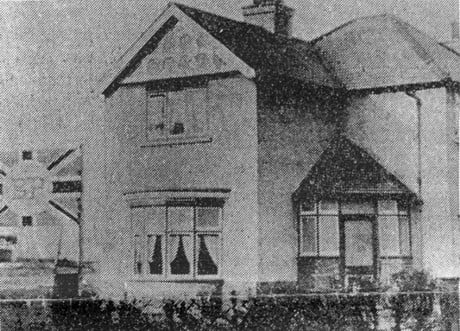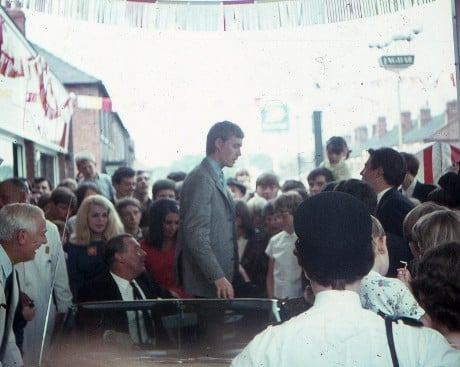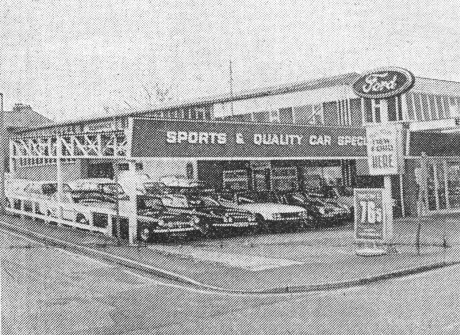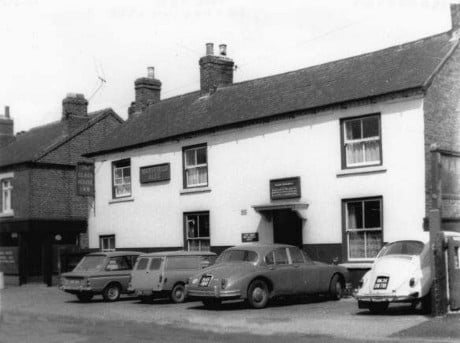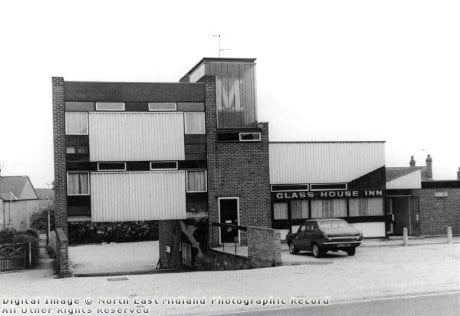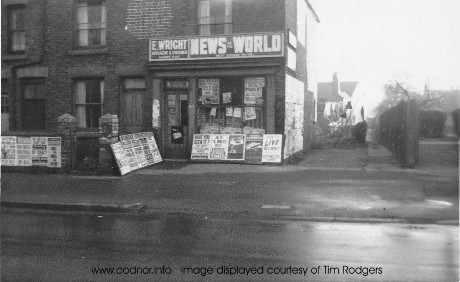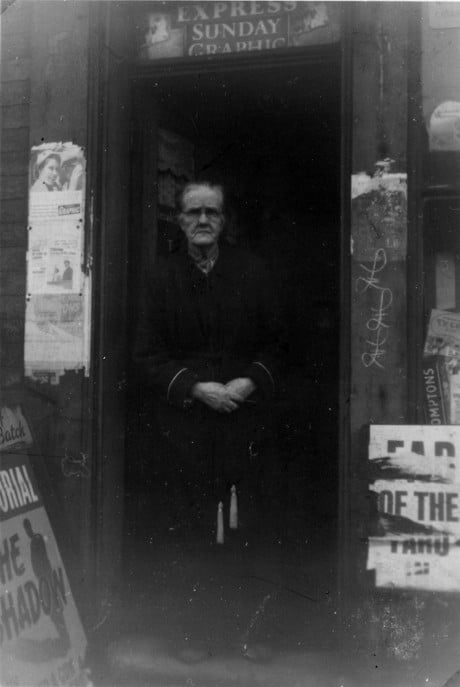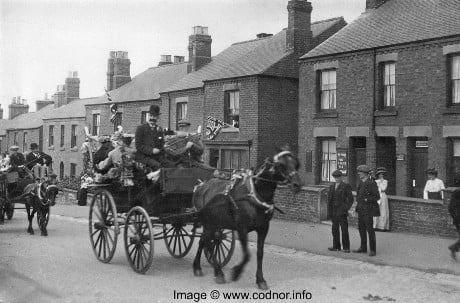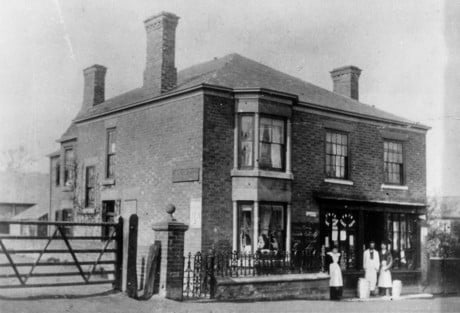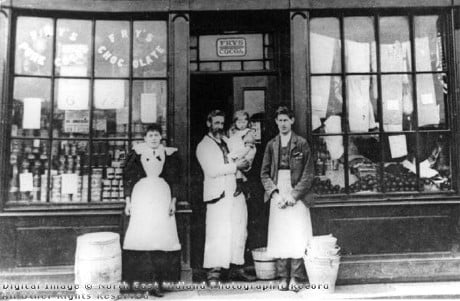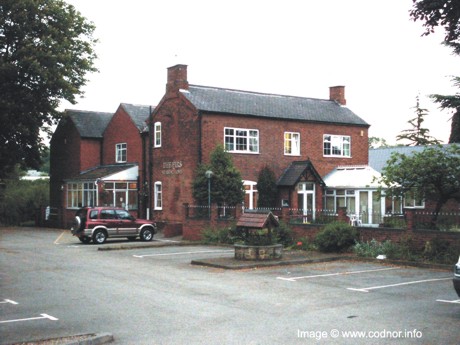
Glasshouse Hill
There are two schools of thought as to how Glasshouse hill got its name. The first suggestion is that it may have originated from the Old English words “Glasso” meaning stream and “Hus” meaning house (house by the stream), the second and most likely explanation is that it was named after a glasshouse that once stood in this location.
This explanation is further supported by an article that appeared in the 'Nottingham Weekly Courant' dated Thursday 8th November 1716.
The article advertises a Glasshouse in Codnor that appeared to have been recently reconditioned. The owner’s intention was to lease the Glasshouse to anyone that could put it to work making glass. The article reads as follows.
Fig.1 A glass-House, Barn and half Rood of Land, lying at Codner in Derbyshire, to be Mortgaged, for 40 or 50 Pound, which has had above 120£ laid out on it lately, the Principal and Interest to be paid in six Months Warning; the Design being to set the Glass-House at work; who-ever has money to spare are desired to give notice to the Printer of this Paper, who will inform them further about it.
Another reference in the same publication in 1722 is identified by the Heanor & District Local History Society Newsletter 279 and it reads as follows.
This is to give notice that there is a very good Glass House built at Codner, in the parish of Heanor, in Derbyshire. The charges and purchases of which doth amount to 150£ and upwards. The owner whereof offers to mortgage the same for 60£ in order to finish it, the said House being not as yet perfected. The said owner doth engage himself to finish it thoroughly by midsummer next, fit for working therin, it being a very good title.
NB. It lies within 9 miles of Nottingham, 7 of Derby, 7 of Mansfield, 7 of Wirksworth and 3 of Overton (Alfreton). Within a quarter of a mile of the said Glasshouse is very good coal to be had at a reasonable rate.
William Shiptons map of 1792 shows Glasshouse hill is referred to as Langley Mill Road.
Else Motor Group
Mr & Mrs J.A. Else opened a small filling station on the corner of Glasshouse hill and Hillcrest drive back in 1949. Over the years the modest garage grew in size with the addition of used car sales and spares department. Their youngest son Robert joined them after completing a motor engineering course at college.
Fig.2 J.A.Else's original premises at the top of Glasshouse Hill back in 1949. Displayed Courtesy of The Ripley & Heanor News
J.A.Else & son became a Ford agent in 1962, this was reviewed by Ford in 1966 resulting in J.A.Else & son covering a much bigger area.
Further expansion saw the small shop and detached house demolished and replaced by a new two storey sales and spares building as well as new showroom and covered autodrome. The business went on to become a Jaguar Agent for Derbyshire and Nottinghamshire in 1965 and Lotus distributer for Derbyshire, Nottinghamshire, and South Yorkshire.
1968 saw the addition of one of the most modern vehicle respraying systems in the country at Langley Mill. This drive-in process developed in the USA cost £20,000 to install, but with the respray process only taking two hours at a cost of £59.50, was much cheaper then other systems.
The garage service department also benefited from the introduction of the ‘Servishell Diagnostic Centre’. This was built into the old body repair shop and offered quick and efficient tuning facilities.
Robert A Else went on to become chairman and managing director of the Else Motor Group with a workforce of over 40 staff. He was also associated with POP music, having his own group, ‘53rd plus 3rd’ who had two records in the top 30 in the late 1960s
The Glasshouse Inn
Originally known as the Old glasshouse Inn and again most probably gets its name from a glasshouse that existed near this location. It was one of the oldest pubs in Codnor and is thought to have been built around 1800. It does not appear on William Shiptons map of 1792 (the plot of land being owned by W Milnes) but was a stopping point for the rebels in the 1817 Pentrich revolution led by the Nottingham Captain, Jeramiah Brandreth.
On reaching Codnor, Jeramiah demanded admittance at the Old Glasshouse public house owned at the time by Joseph Thorpe. He had the landlord give his men bread and cheese and ale, but when he was presented with the bill he refused to pay saying that "If we offer you a Bank of England Bill it will be of no use now". The revolutionaries continued on their march but only got as far as Eastwood before they were intercepted by a detachment of the 15th Hussars.
Fig.6 A new Glasshouse Inn was built behind the old pub, which was then demolished in 1970. The new pub was owned by the Mansfield Brewery but they sold it to Scottish and Newcastle Brewery in 1986 and it is now the Ce Bella Restaurant.
Displayed Courtesy of PictureThePast.org.uk
Fig.7 Just below the glasshouse Inn is a jitty that leads to Alfreton Road and below that used to be Elizabeth Wright's Newsagents.
Fig.8 Elizabeth Wright standing in the doorway of her newsagents shop.
Fig.9 This picture shows the Coronation parade for King George V and Queen Mary in 1911. The sign on the front of the house reads 'The Peoples Flag is Deepest Red' this is the first line of a song called 'The Red Flag', which is associated with left-wing politics and socialism.
A little further down Glasshouse hill on the left on the corner of Holborn view, used to stand Kensit’s ‘Little Wonder’ store. So called because it sold just about everything from tin baths to boiled sweets.
Opposite Kensits shop on the right hand side of the road used to stand the Christian Science Church. This was built in 1935 on land purchased from Mrs Eyre who lived at the Farmlet.
More information about the Christian Science church is available on the Churches & Chapels page.
The Farmlet
The Farmlet is set back from the main road and is now part of the Firs Nursing home complex, which has been extended on to the grounds once occupied by The Christian Science Church. The Farmlet was owned by Mrs Eyre whose two sons were both killed in the First World War. See the WWI Roll of Honour page for more information on Cyril and Geoffrey Eyre.
Fig.13 The Farmlet still exists and is now part of 'The Firs Nursing Home'
More To Follow
Information for this page was obtained from the following sources.
My Village, by Joseph Millet Severn 1935
The Heritage of Codnor & Loscoe, by Fred S Thorpe 1990
The Origin Of Heanor Street Names, Heanor & District Local History Society publication 1992.
Heanor & District Local History Society Newsletter 279 February 2005
Ripley & Heanor News,August 1968
Nottingham Weekly Courant 8th November 1716

